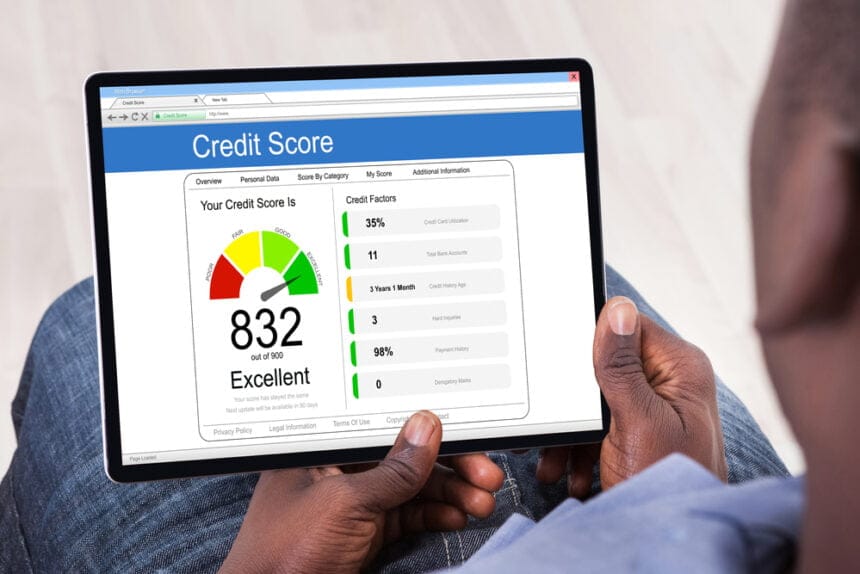Data analytics technology has significantly improved the state of finance. The financial analytics market size was worth $7.99 billion last year and is projected to be worth over $18.7 billion by 2030.
We have talked about some of the many ways that data analytics technology is changing the state of finance. One of the ways people are benefiting from data analytics is by improving credit score monitoring.
Risk is an ever-present companion in the world of finance. Understanding and managing risk is critical whether you are an individual investor, a financial institution, or a multinational organization. Credit risk is one of the most critical hazards that banks and financial organizations face. This is the risk of a debt default caused by a borrower’s failure to make due payments. Diversification, on the other hand, is a valuable instrument that may assist limit this risk.
Understanding the Impact of Big Data on Credit Risk
Credit risk, also known as default risk, is the risk that a borrower may fail to meet their responsibility to repay a loan according to the conditions agreed upon. This risk is inherent in lending operations, whether the borrower is an individual seeking a personal loan or a multinational organisation seeking funding for a new project. Credit risk may result in everything from late payment penalties to huge financial losses, especially if the borrower fails on a considerable sum or if a large number of borrowers default at the same time.
Big data technology is making these processes easier than ever. The World Bank Blog has an entire post dedicated to this topic.
To comprehend credit risk, various elements that impact a borrower’s capacity to repay must be considered. The borrower’s financial health, economic conditions, interest rate variations, and even geopolitical developments are among these influences. Credit risk is often assessed by lenders by looking at a borrower’s credit history, present financial situation, and possible future income.
Credit ratings, financial data, and other techniques may be used to assess the possibility of payback. Lenders may make educated judgements with the assistance of Provenir’s credit decisioning and ensure the long-term viability of their lending operations by recognizing and properly managing credit risk.
The Concept of Diversification
Diversification is a risk management approach that entails spreading investments across many assets or asset classes in order to limit exposure to a particular asset or risk. The concept is straightforward: don’t put all of your eggs in one basket. Diversification reduces the impact of a single investment’s potential loss since other investments can counteract it.
Diversification in Credit Risk Reduction
Financial institutions can diversify their loan portfolios in the same way that an investor diversifies their investment portfolio. The impact of a single default is lessened by lending to a diverse range of borrowers across multiple sectors, locations, and credit ratings. For example, if a bank has diversified its loan portfolio across retail, manufacturing, and technology, a downturn in one area will not devastate the entire portfolio.
Securitization of assets entails aggregating various forms of contractual debt, such as mortgages, credit card debt, and vehicle loans, and selling the resulting cash flows to third-party investors. Banks may diversify the risk associated with various assets in this manner, making them less sensitive to defaults in any specific asset class.
Extending lending activities across regions or nations can help mitigate the impact of localized economic downturns. If a natural disaster strikes one region, a bank with a geographically diverse portfolio will be less affected than a bank that solely lends inside that region.
Offering a diverse range of credit options, such as short-term loans, long-term mortgages, and revolving credit lines, can also assist reduce risk. distinct credit products have distinct risk profiles, and a diversified product mix can help to balance the risks associated with each.
Benefits of Diversification in Credit Risk Management
A more diverse lending portfolio might result in more consistent results. Even if one industry or location is experiencing a slowdown, others may be functioning well, guaranteeing a consistent income stream. Diversified portfolios tend to have lower asset correlation. This indicates that a single asset’s bad performance does not inevitably influence the performance of others.
Diversification also forces financial firms to expand their perspectives. As organizations expand into new industries or locations, this frequently leads to improved risk assessment practices.
Challenges and Considerations
Diversification is a great tool, but it is not without its drawbacks. Managing a diverse portfolio necessitates knowledge of several industries and geographies. This can put a strain on a bank’s resources and necessitate the use of more complex risk assessment systems.
Too much diversification might result in a loss of competence. A bank that specializes in a certain industry may have an advantage in risk assessment in that industry. Too much diversification might weaken this benefit. Furthermore, during times of global economic crisis, diverse assets may begin to exhibit correlations, decreasing the benefits of diversity.
Conclusion
Diversification is critical in reducing credit risk. Financial institutions can protect themselves from the disastrous impact of concentrated defaults by diversifying their exposures across different assets, industries, and locations.
Diversity, like other tactics, involves careful planning, implementation, and ongoing monitoring. In the ever-changing global finance scene, keeping proactive in risk management through diversification might be the key to long-term development and stability.







